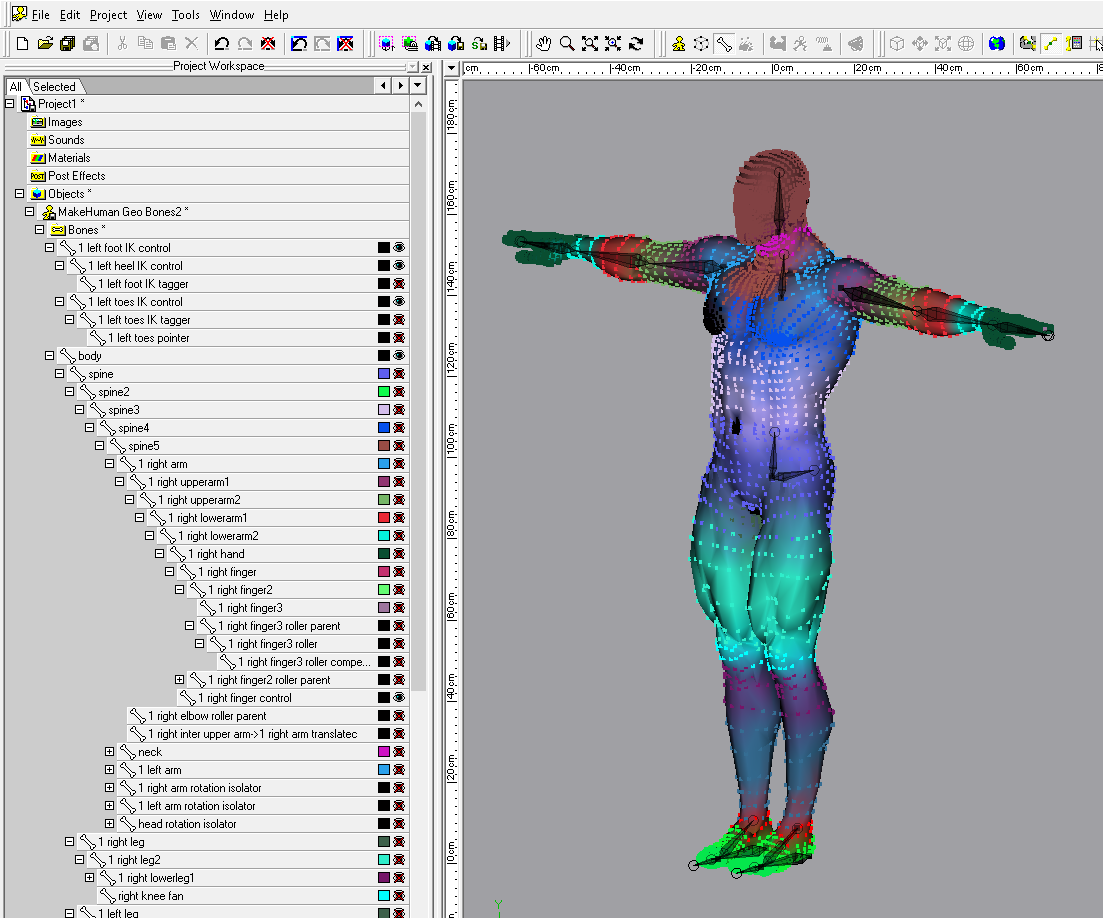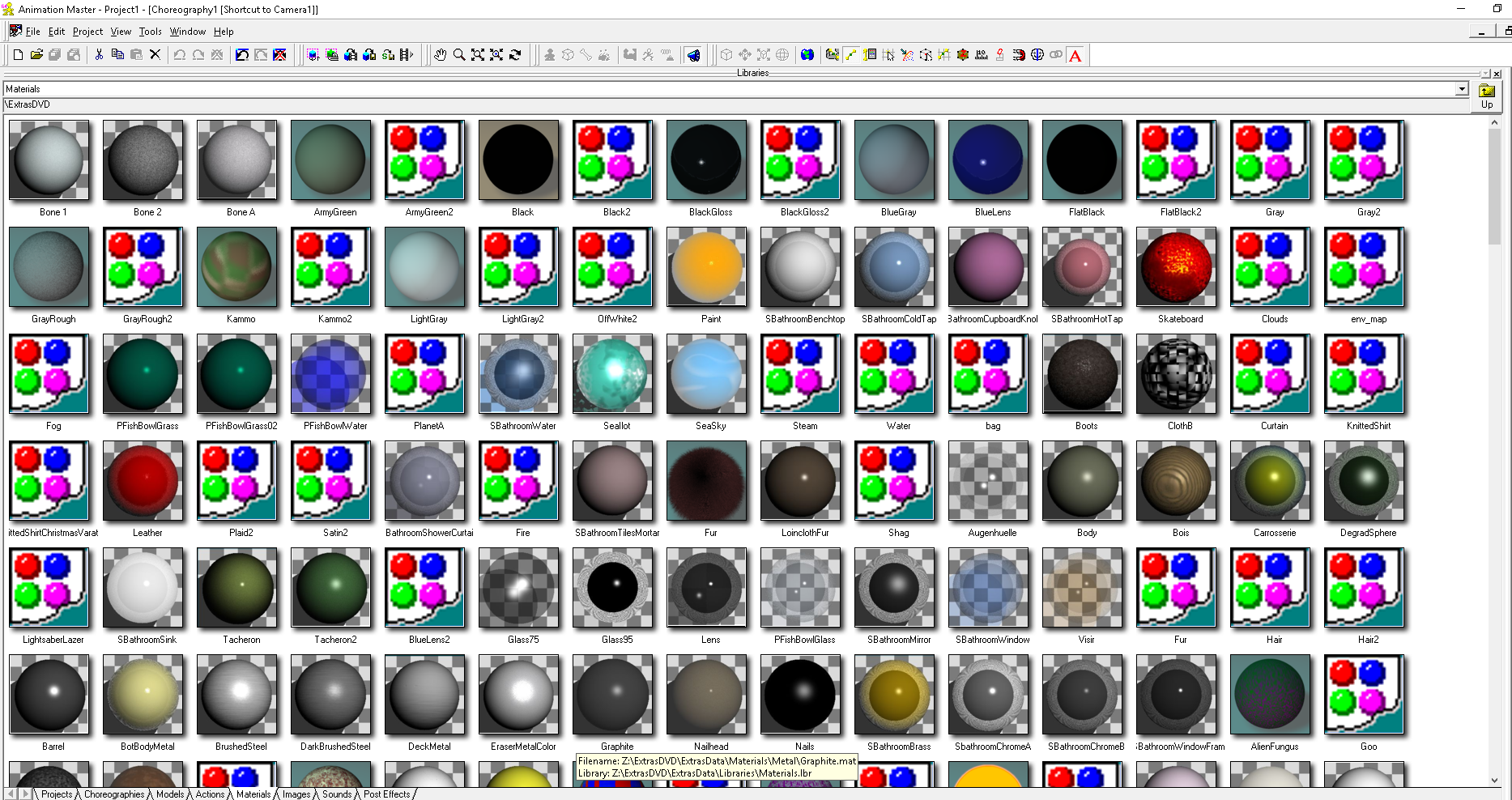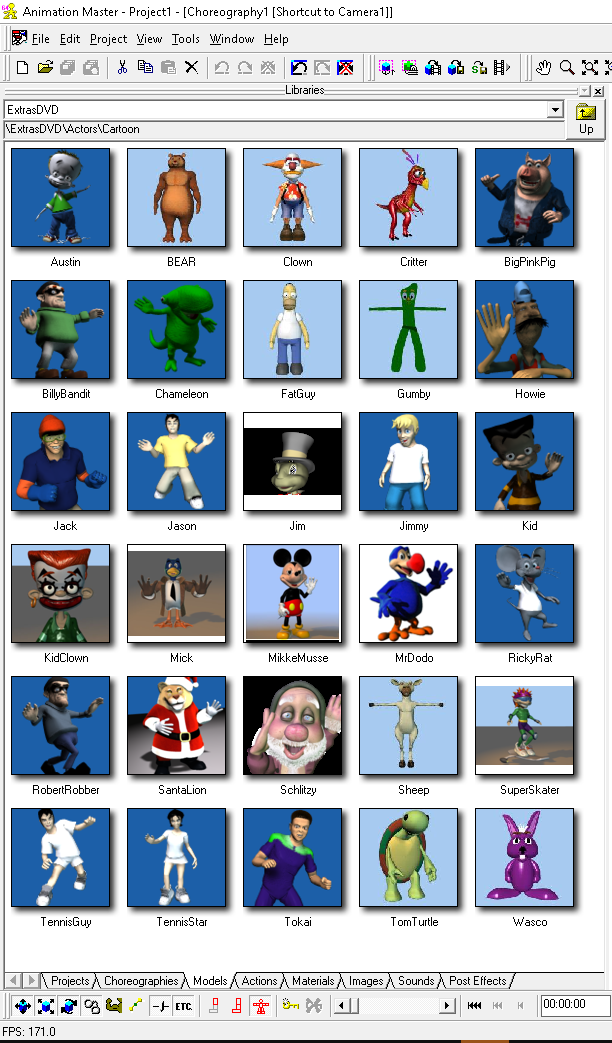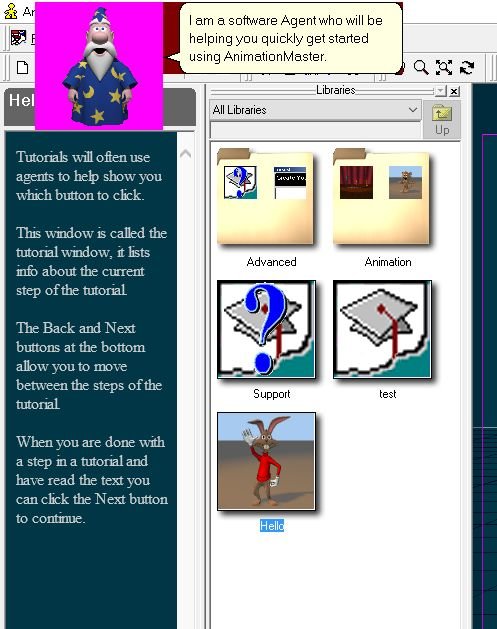-
Posts
21,649 -
Joined
-
Last visited
-
Days Won
119
Content Type
Profiles
Forums
Events
Everything posted by Rodney
-
Attached is a Library of John's projects that if you drop the file in the Library directory of the ExtrasData all 350+ projects will be available... assuming.... you unzipped them all in the same directory as the root JohnL3D folder that contains all of the zipfiles. Very few have icons assigned to them at this point but I might make it a goal to create those and redistro the project files. I've long been wanting to get the Tinkering Gnome's projects out further into the public eye. Note: Because I have 7zip installed I just select all the zip files in the extras directory where they reside and choose 'Unzip here'. Once that's done and the attached library file is in the library folder A:M will automatically gain that Library if you've already pointed A:M to the Libraries folder. JohnL3DProjects.lbr
-
They sure are. (I can't vouch that every zip has a project file but... they should) There may even be some html in there that explains some of the projects. As some point we were working on organzing the Tinkering Gnome's project files but... yet another thing that got put on the backburner. What you could do with those... with respect to your Libraries... is create a LIbrary folder named JohnL3D.... unzip all those zip files in a reliable location... then drag/drop all the project files into the that JohnL3D folder. Disclaimer: I generally don't attempt to run the Extras off of their CD or DVD... I copy them to a harddrive and then grab them from there. In this way the files can be edited/modified.
-
That's perhaps even more reason why it might be useful to have a means by which Groups were created via Bones and the Control Points assigned to each. This seems even more appropriate given that the weighting current already gets colored by each bone. So what might drive the creation of a Group would be (primarily) 2 fold; first, there would be a Group created for each bone, and secondly an additional Group would be createdfor any overlap of weighting. The Group would automatically take the name of the bone as a default in order to keep the one to one match up between Bone and Group. The areas of partial weighting then would receive a treatment similar to Fan bones... so there could at least in theory be multiple groups generated as subgroups to identify areas of overlap. Those areas of overlap then would be likely areas for additional attention anyway via adjusting of weights, smartskinning or direct mesh animation. I would not expect the reverse to be as accurate. That is to say Groups driving the creation of Bones although the process could work in reverse.where Groups could automagically create (at attach to) bones. I suppose the main flaw in this approach might be that there may not be much need for a one to one matching of groups to bones/bone weighting but there are a number of reasons why I think that might be optimal specifically when considering that Groups are the place where surfaces are defined and Groups can easily contain all, some or none of the CPs of other Groups. The fascinating part of this to me is that weighting very obvious already does define groups as can be seen by the color of each bone and the bone's influence. I really need to leave this extraneous exploration alone though as it's way out of my comfort zone. But in my naive thinking I just see the colors and say... hey... that's the Groups right there... why do I need to manually create them?
-
Never one to be satisified with a 60 second auto-weighting rig of a character... I find myself wondering about being able to auto create groups based on bones and weighting. It seems to me that the process of Grouping could be trimmed considerably because the weights already dictate the groupings. Just mindless speculation. Press on. Press on! Very interesting stuff going on here.
-
Impressive Robert. You make me wonder how trying to transfer weights form something like the default Knight model to a mesh from one of those generators might work.
-
We haven't been able to sell Robert on the usefulness of Libraries yet... but *IF* we ever do.... look out!
-
Here's an example of how materials with missing icons on the Extras DVD appear in a Library. (I just created this Materials library via the command line search/replace approach) The only way to 'repair' the resources that don't have previews (so their icons appear in the Library) is to: - Open the material in A:M - Create the icon for the Material via Right Click > Create Icon - Resave the material. Note also that I haven't sorted/organinzed any of these materials into folders. In a perfect world I suppose the directories on disk would automatically specify the categories. Added: I've updated most of these materials so that they have icons since starting this post as it is relatively easy to do. I'll plan to upload them all as soon as possible.
-
The Extras DVD Libraries is a little better set up than I had remembered. So... to return to your original question... To connect to another Library we just have to point A:M to that Library. What this means for the Extras DVD is that you should place the content of the Extras DVD in the same location on your harddrive so that the Library will point to the correct location. Then the important part... Go into Tools > Options > Folders and add the Library file for the Extras DVD to the listing. Then restart A:M for good measure and the Library should appear in the Library dropdown.
-
The Extras CD has pretty good libraries... the Extras DVD... um... may not have hardly any (?) I've created a few libraries in the past by using the command line to pipe all the projects, models, actions, etc into a text file and then used search/replace to make those valid Library files. I should make that a task to do for the Extras DVD and people could just download it from here in the forum and use it.** Let me know of your level of interest in that and I'll see what I can do. The basic process (via command line) is pretty straightforward and any programmer with basic skills could automate that process pretty handily. In short, if using that method I just run a search for each type of A:M file and put the results into a temporary file. Then when all files are populated I merge them together in the correct order (Project files first, etc) then do the Search/Replace. As I recall, one of the primary issues with creating LIbraries for the Extras DVD wasn't creating Libraries but rather that each asset did not have an associated icon because more often than not the contributor had not taken time to create that icon and the icon is an integral part of the A:M file itself. If the icon isn't there, A:M display the default icon for that file type which when combined with hundreds of other default icons is not particularly helpful when looking through Libraries. With the ExtrasM CD, we had a Project Lead and a team of people that went through file by file and not only updated the file to then current standards but ensured the icon was present as well. With the Extras DVD, it was primarily just me putting a bunch of random files onto a DVD... so... no fault of anyone else... and hats off to contributors who shared some great resource... but blame me for the lack of quality in presentation etc. I had high hopes but fell very short of the mark with the DVD. Somewhere I have a DVD prototype that in my estimation was a little more on point (in my estimation) but it didn't quite make the cut. I think it was Glenn Anthofer that created the windows utility/program that creates Libraries (at the request of Rusty Williamson) and I should give that a try as that might make short work of creating the initial Library and determining how many icons are missing. My memory says it was a lot of missing icons. But... like eating an elephant (in a world that allows such things) adding the icons just takes a 'one bite at a time' approach so I could see myself committing to doing it where there is sufficient interest. Conversely, of people don't particularly care about using Libraries it's hard to justify spending time creating icons for them. **This almost sounds like something I've done before and posted to the forum but my memory is likely faulty. Added: In general I wouldn't mind being involved in another Extras type project but I don't think DVDs might be the right format for distribution these days. I've tested a few other options but none have proven sufficient.
-
The Libraries are files with shortcuts to the location of the actual asset. As such, the best way to move Libraries to an external drive is to move the assets there. The A:M CD's libraries should be set up so that the shortcuts are relative and so connecting to that Library in its new location should still connect to those assets as long as the relative location of the library hasn't changed. This doesn't mean that a quick search and replace couldn't allow for other locations of course. Here's an asset's basic entry in a Library file: [MODEL] AM Extras CD Vol1|Props|Personal| FileName=../Models/Props/Personal/BodyParts/Shoes-starter.mdl [ENDMODEL] Note how the Filename points back one directory via the two dots .. if we wanted to use the current location as our starting place we could use one dot . Or we could put in a fuller address where we think an asset would never change locations. In general it's best to use relative paths and then just place the Library in the correct location. There are other ways to approach this of course. On windows there is a utility that can be used to build Libraries. And perhaps the easiest way to create Libraries is to drag and drop from their location directly into the Libraries.
-
Outstanding John!
-
I wonder if there is something in a recent Windows update that is causing problems. (Assuming @Jeff that you are using a recent release of Win10 that is. I see your profile says you are on Win10) I was going to post that I cannot apply a decal but it seems that I can in certain instances. For instance if I render out an image from A:M... that image I can use as a decal. But many/most other images...A:M crashes upon hitting the Apply button. Currently I'm thinking it's because the PNG images I am using might be of a higher resolution than normal... or more bit depth.... Still investigating but currently it is very difficult to decal in v19e or v19f. I do not crash when creating a new Action though so.. cannot confirm that here. Edit: I get a crash on 'Apply Snapshot' as well.
-
It's great to see you back in action again.
-

Stalled Trek: The City on the Edge of Foreclosure
Rodney replied to largento's topic in The Wannabe Way
Looks like you've already exceeded your goal by a considerable amount! Quick, get some other bonus tiers in there! (and maybe allow those who pledged $100 to trade up (in some way) if they think it's a better deal. As cash is tight I may have to sit this one out but we'll see.. 29 days to go... I still have lots of time to add to my collection of Largento DVDs. . -
Hi Jeff! Welcome back! Yes, it's a digital version. It's the exact same thing as the subscription. It just doesn't expire. There is no CD version. Although we can download the digital and burn it to a CD for those that really want a CD. And I won't give you a hard time about the $79 vs $300 thing. I've been thinking about getting a copy of the eternal A:M myself.
-
Ah, the good ol' days! Remember this wizard? I do seriously miss that html tab in the LIbrary. I think they removed it expressly because I had started to use it when no one else did. The only thing off here in Win 10 is that pink area around the wizard that should be rendered transparent .
- 12 replies
-
Nice one Rodger! The smoke and steam stands up fine for me. I did notice my mind started to wander just a little as the general repetition at the beginning didn't change much. The music may have been what held my attention until I began to sense the imagery changing. A few changes in scenery likely would have welcome... and occasional bush or patch of dirt etc. I was very surprised not to see some strobing of the tracks as they came more clearly into view. That worked quite well.
-
I remember that. (the water project stuff... not the actual shark attack) Great stuff Robert!
-

BVH Capture Sequence not working like it used to...
Rodney replied to John Bigboote's topic in Open Forum
Now you've got me wondering how far back A:M was able to do that (swapping of BVH without reconstraining). In my tests that's tended to be the thing that kept me from moving forward with BVH animation.... the requirement to re-constrain everything. -
Looks great Ken!
-
It took me three tries because evidently my browser had stored the wrong username and password so 'Rodney' wasn't my email address and the password just wasn't correct. After entering my email address and old password manually I was able to login.
-

Stalled Trek: The City on the Edge of Foreclosure
Rodney replied to largento's topic in The Wannabe Way
I'm fascinated by how you managed to get a new cast to reprise the original roles of the classic Stalled Trek. hehe I eagerly wait to see the results! -
Avast isn't evil but it's related to evil. In other news: They have invented a 100% secure computer but unfortunately it is so secure no one can use it.
-
Thank you!













